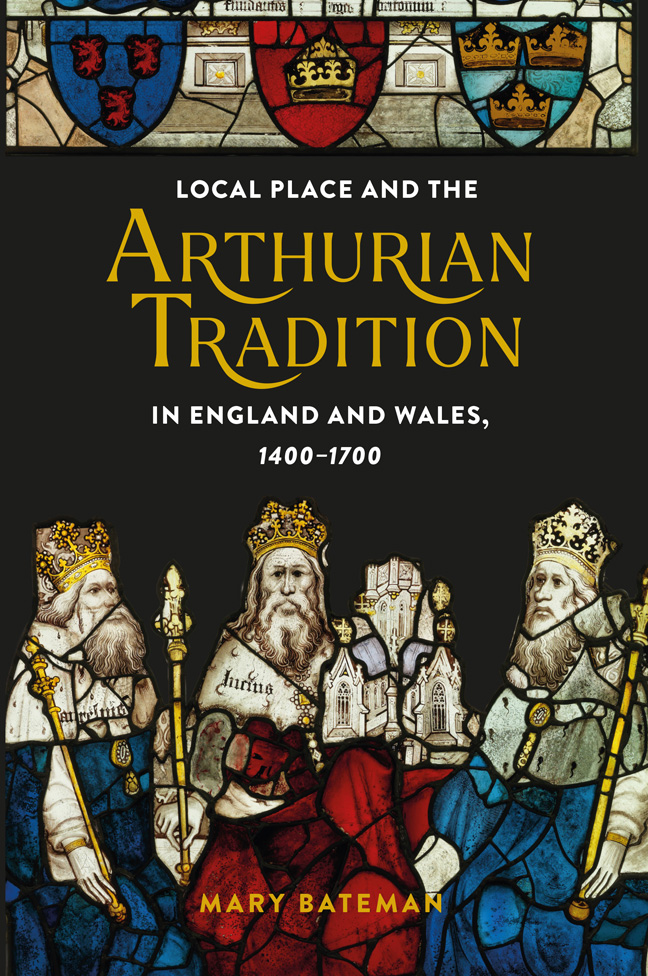Book contents
- Frontmatter
- Contents
- List of Illustrations
- Acknowledgements
- Introduction: Place and the defence of Arthur
- 1 ‘Thise were his places and his habitacions’: Arthur in situ in the fifteenth century
- 2 Contentious places: Reconciling Arthurian places in the fifteenth century
- 3 The best of the west: John Leland's West Country Arthur
- 4 Locating Arthur in England and Wales: John Leland, John Prise, and Elis Gruffydd
- 5 Placing Arthur in William Camden's Britannia
- Coda: Arthur's local renaissance?
- Bibliography
- Index
- Miscellaneous Endmatter
2 - Contentious places: Reconciling Arthurian places in the fifteenth century
Published online by Cambridge University Press: 21 February 2024
- Frontmatter
- Contents
- List of Illustrations
- Acknowledgements
- Introduction: Place and the defence of Arthur
- 1 ‘Thise were his places and his habitacions’: Arthur in situ in the fifteenth century
- 2 Contentious places: Reconciling Arthurian places in the fifteenth century
- 3 The best of the west: John Leland's West Country Arthur
- 4 Locating Arthur in England and Wales: John Leland, John Prise, and Elis Gruffydd
- 5 Placing Arthur in William Camden's Britannia
- Coda: Arthur's local renaissance?
- Bibliography
- Index
- Miscellaneous Endmatter
Summary
In order to appreciate the connections between localised, in situ experiences of Arthur in the fifteenth century and the local Arthur handed down by later antiquarians such as John Leland and William Camden, it is crucial to understand the sheer number of Arthurian localities available to Arthur's early modern defenders, and the ways in which those defenders consolidated, reconciled, and managed such a wealth of Arthurian place claims. As the previous chapter demonstrated, the fourteenth and fifteenth centuries were characterised by Arthurian sites communicating their local histories to interested visitors, some of whom noted them down in travel diaries or perused the holdings of the on-site libraries. This was the first step in the emergence of a local Arthur; by the fifteenth century, there were a very large number of places across England, Wales, and Scotland claiming a connection to Arthur in some way, and visitors to Arthurian localities in this period, such as William Worcester and John Hardyng, often visited a significant proportion of them. This multiplicity means that the local Arthur in the fifteenth century would have been hard to miss.
For those invested in defending Arthur's reality and purging his history of some of its less credible elements, these Arthurian locations needed to be sorted through. The enormous range of Arthurian place claims that existed by this stage – some of which were contradictory – laid the groundwork for those writing about Arthur in the sixteenth century to locate Arthur wherever they thought most appropriate. Later chapters of this book will analyse the different regions carved out for Arthur by his early modern defenders according to their own affiliations and interests; but before we come to these it is important to grasp the vast number of possible places in which Arthur might be located.
This chapter therefore pulls together the competing Arthurian place claims that were current in the fifteenth century, and suggests reasons as to why some sites were contested while others were not. Some of these place claims are obviously contradictory, sometimes the product of civic, episcopal, or local competition (largely over unidentifiable obsolete toponyms from ancient texts). Others, however, are less contentious than they initially seem. Locations claimed as Arthur's court or the site of his Round Table, for example, are accepted as plural. Sometimes Arthurian toponyms are not fought over, but rather shared out.
- Type
- Chapter
- Information
- Publisher: Boydell & BrewerPrint publication year: 2023



